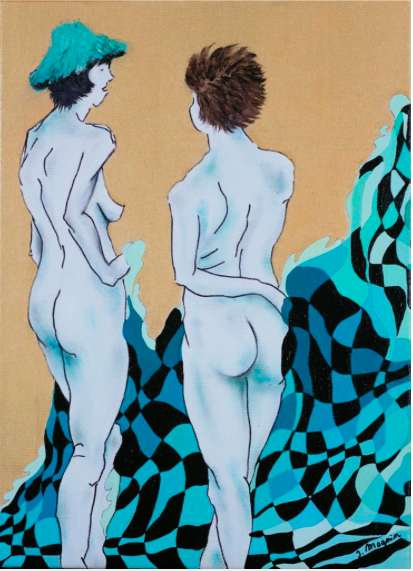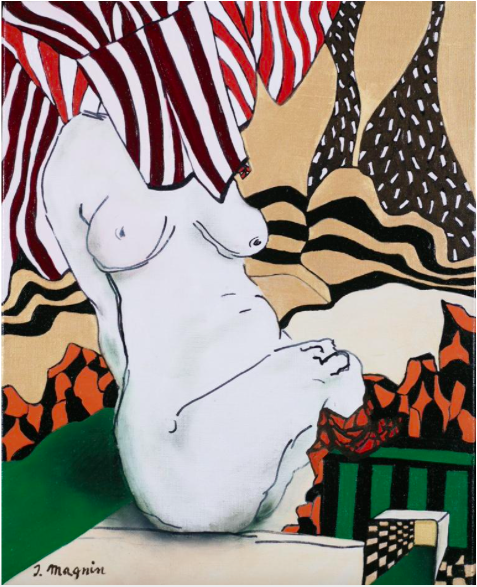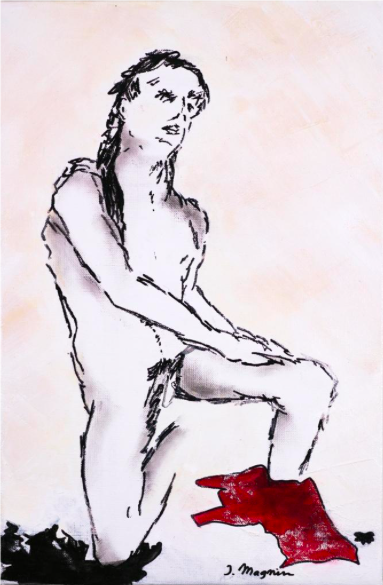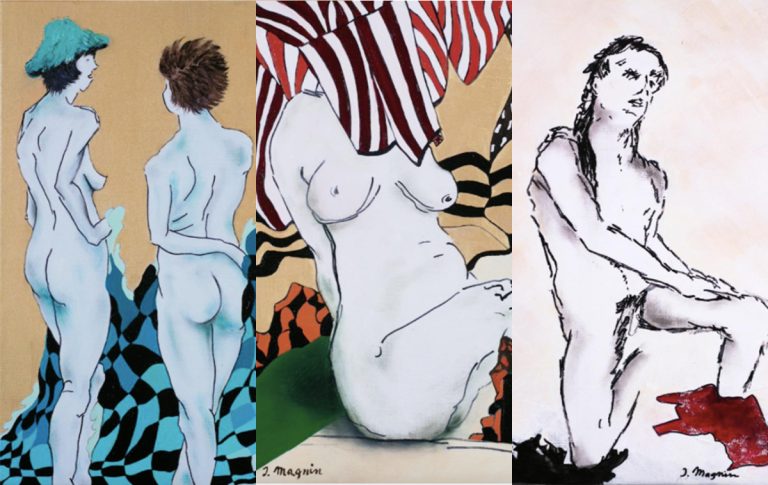Isabelle Magnin is a French artist who sees the world through the lens of images. From the age of seven, drawing and painting became a central part of her life, but her curiosity extended far beyond the canvas. Her love for science, particularly mathematics, physics, and algorithms, led her to pursue a distinguished career as a researcher in Medical Imaging at INSERM (National Institute for Health and Medical Research). Through her scientific work, she collaborated with researchers worldwide and was honored with prestigious distinctions, including the gold medal for innovation from the European Federation for Non-Destructive Testing in 1994 and the rank of Chevalier de la Légion d’honneur in France in 2015.
Magnin’s artwork reflects her deep fascination with the mysteries and complexities of humanity and nature. She often focuses on the beauty and intricacies of trees and humans, using both oil painting and digital techniques to explore themes of connection, emotion, and ambivalence. Her artistic influences span from Renaissance painters to Surrealists like Niki de Saint Phalle and Klimt, blending these inspirations into her internationally sold creations.

Magnin’s collection “Milky Nudes” (“Nus lactés”) is an intimate exploration of human vulnerability, nature, and emotion, where each piece presents a story embedded in both form and feeling. Three paintings from this collection, The Wave, Hidden Face, and Timothée, offer viewers a glimpse into her artistic world, where oil and ink are intertwined to evoke both personal and universal themes.

The first painting in the collection, The Wave (La Vague), depicts two women who find solace and freedom as they relax by the water, sharing stories and embracing the invigorating sensation of the waves. Magnin captures a moment of joy and liberation, where the subjects are not merely surrounded by nature but seem to merge with it. The wave in the painting is portrayed as a “deformable mesh,” constantly shifting like a living entity. This reflects the fluidity of life itself, symbolizing both the ebb and flow of experiences. The water, gentle yet powerful, becomes a metaphor for the unpredictable but nurturing nature of existence.
Magnin’s use of oil and ink in The Wave gives the painting a dynamic texture. The oil lends depth and vibrancy to the women’s figures, while the ink captures the wave’s changing form. The constant movement of the wave contrasts with the stillness of the women, highlighting the fleeting nature of these peaceful moments and how they can be washed away, like the tides. The painting invites viewers to consider how they engage with their own moments of freedom and happiness, recognizing the impermanence that often accompanies them.

In Hidden Face (Face cachée), Magnin presents a more introspective scene. The seated woman, resembling a statue with her bent legs, hides her face beneath an awning. This obscured view sparks questions: Is she avoiding the world, or is she shielding herself from self-acceptance? The ambiguity in her posture and expression speaks to themes of self-reflection, vulnerability, and perhaps even shame.
The rich gold background draws immediate comparisons to the works of Gustav Klimt, whose ornate style often emphasized both beauty and complexity. The gold contrasts the somber tone of the woman’s hidden face, underscoring the tension between self-image and the external world. Is the figure hiding from judgment, or is this a moment of retreat for self-discovery? Magnin leaves the answer open, allowing the viewer to project their own interpretations of why the woman remains concealed.
Lastly, Timothée introduces a male subject into the collection, offering a more narrative-driven piece. Timothée is depicted kneeling, one knee on the ground amid torn clothing, leaving the viewer to wonder what has just occurred. Magnin offers multiple interpretations: Is this the aftermath of a physical confrontation, a sports event, or an internal struggle? Timothée’s posture and expression suggest both exhaustion and resilience, capturing a moment of reflection after some kind of ordeal. The ambiguity of the scene allows the audience to question the nature of the conflict—whether it was a battle with another or a personal confrontation with oneself.
Timothée deviates from the more introspective, abstract nature of The Wave and Hidden Face, bringing a raw, almost theatrical quality to the collection. Magnin’s decision to leave the scenario open-ended invites viewers to speculate on the story behind the scene. Is it a story of defeat or personal growth? The lack of definitive answers reflects the complexity of human experience, where struggles are often multifaceted and layered with meaning.
Isabelle Magnin’s “Milky Nudes” collection showcases her ability to blend visual storytelling with deep emotional themes. Through a combination of oil and ink, her paintings evoke both introspection and outward expression, allowing viewers to explore their own emotions as they engage with the art.

